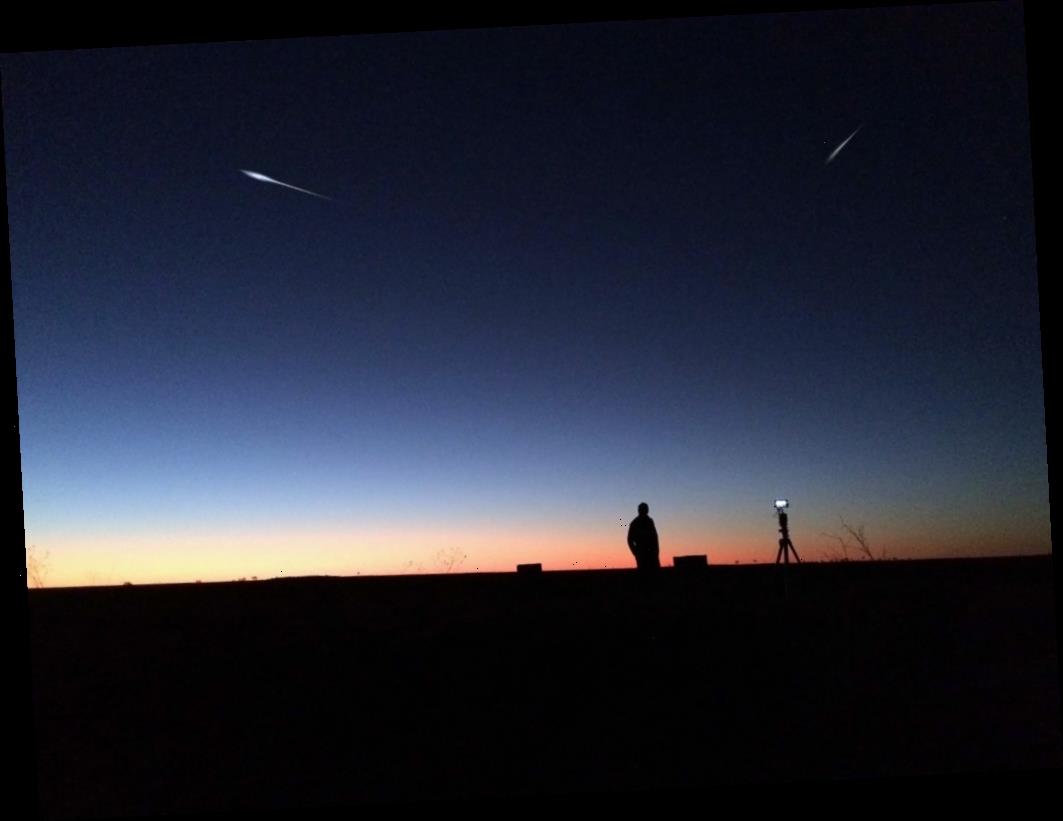By my reckoning, Werner Herzog became the first feature director to have shot films on all seven continents when he made it to Antarctica in 2009 for Encounters at the End of the World. He’s back there again, and to nearly every other continent as well, for his latest documentary, Fireball: Visitors from Darker Worlds, a consideration of what will happen when (as the director considers inevitable) Earth is struck by a giant meteor the likes of which wiped out the dinosaurs some 66 million years ago. Despite its heavy, apocalyptic concerns, the new film is relatively lightweight by Herzog’s standards, as it’s basically a series of chats with scientists and specialists laying out the history of asteroids smacking the planet and speculating about future collisions and they would mean for the world. Apple TV+ has acquired broadcast rights.
By the director’s vaunted and idiosyncratic standards, Fireball is relatively conventional, talking heads photographed in picturesque locales and addressing essentially the same topic (he co-directed with Cambridge-based volcanologist Clive Oppenheimer, who has spent 13 seasons in Antarctica). However, the engagingly idiosyncratic nature of Herzog’s ruminative narration and his probing questions of experts elicit thoughtful and extensive replies as well as welcome humor pertaining to a subject that is very far from being an exact science.
The given assumption here is that our planet has been hit by big meteors before and will be again; it’s only a matter of time. Given that the dinosaur extermination event was discovered less than 50 years ago, it’s clear that we still have a great to deal to learn about meteors, particularly in regard to where they come from, what they’re made of and what might be done in future to detect them early and possibly avoid or mitigate the most dire consequences of a hit.
Herzog provides a little primer on some prominent bombardment events: A filmed fireball coming down over Siberia can only be compared to sci-fi; some of the bigger meteors have significantly altered landscapes in Australia, where aboriginal art depicts them; the black stone of the sacred Kaaba at the Grand Mosque in Mecca is “almost certainly” a meteorite, according to Herzog, although most scientists dispute this; and at 11:30 a.m. on November 7, 1492, what was described as a “divine event”—the descent of a large fireball—took place seven days after Columbus arrived in the Caribbean.
The long and the short of it is that, because of their terrifying, destructive, sent-from-the-heavens nature, great meaning of various sorts has always been ascribed to the Earthly arrival of meteors, which provides Herzog and his mostly engaging subjects plenty of room to discuss supposition, sci-fi fantasies, conjecture and the latest scholarship. It also tees up Herzog’s central, unanswerable, question: “What if the human race became extinct?”
With Herzog dominating the proceedings with his oddly soothing Bavarian intonations providing a nestling bed for even his most alarming warnings, a notably eclectic group of commentators spouts off about the looming, if at this point existential, peril posed by giant rocks hitting our planet. Crackpots and hyper-specialized fanatics share the stage with estimable academics. We hear about a very complicated theory of the five-fold symmetry of nature; a meteorite that was judged to contain a four-and-a-half-billion-year-old compound that originated in an asteroid belt and ended up in Costa Rica, organisms that can exist in spore-like states of suspended animation.
Rather more flamboyant is Brother Guy Consolmagno, an American astronomer who looks to have one of the cushier jobs in his field as director of the Vatican Observatory at the summer papal residence. One the one hand he states that, “I didn’t choose to come here,” while on the other insisting that, “Serious work is being done here,” as he presides over a collection of 1000 meteorites and states his belief that there could be life elsewhere.
Dr. Rob Weryk in Hawaii devotes himself to planetary defense research and speaks of having recently located the first meteor from another solar system, while Kelly Fast, an astronomer at the little-known Planetary Defense Coordination Office (a branch of NASA), is ever on the lookout for asteroids that could be headed our way.
All the globe-hopping ends up once again in Oppenheimer’s beloved Antarctica, which he considers a paradise for asteroid hunters; for starters, the season lasts for five months, during which time the sun never sets, and it’s loaded with meteorite stones.
To even greater effect than usual, the director’s enthusiastic delivery of narration is cut with a kind of existential wryness, one that expresses an enthusiasm for the subject at hand while simultaneously shrouding it with absurdly futile grandeur; what hubris we must possess to think we can contend with the mightiest forces that nature can throw at us, as suggested in a clip from the 1998 disaster film Deep Impact.
As documentaries go, this is a lively one, amusing thanks to its director’s voice and always fresh insights, and authoritative enough to convince even mask-deniers that life on this planet doesn’t provide a free pass. But it doesn’t answer one key consequential question it provokes: Why do so many astronomers have bad teeth?
Fireball: Visitors from Darker Worlds premiered Thursday at the Toronto Film Festival and will bow on Apple TV+ later this year.
Source: Read Full Article

